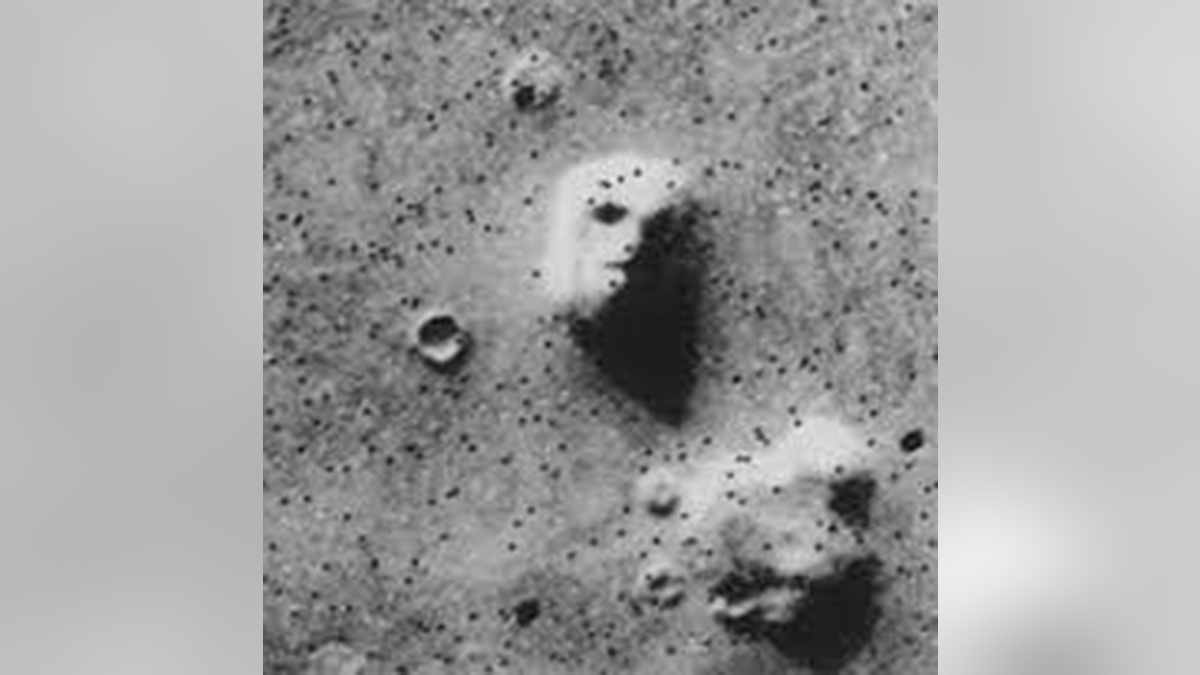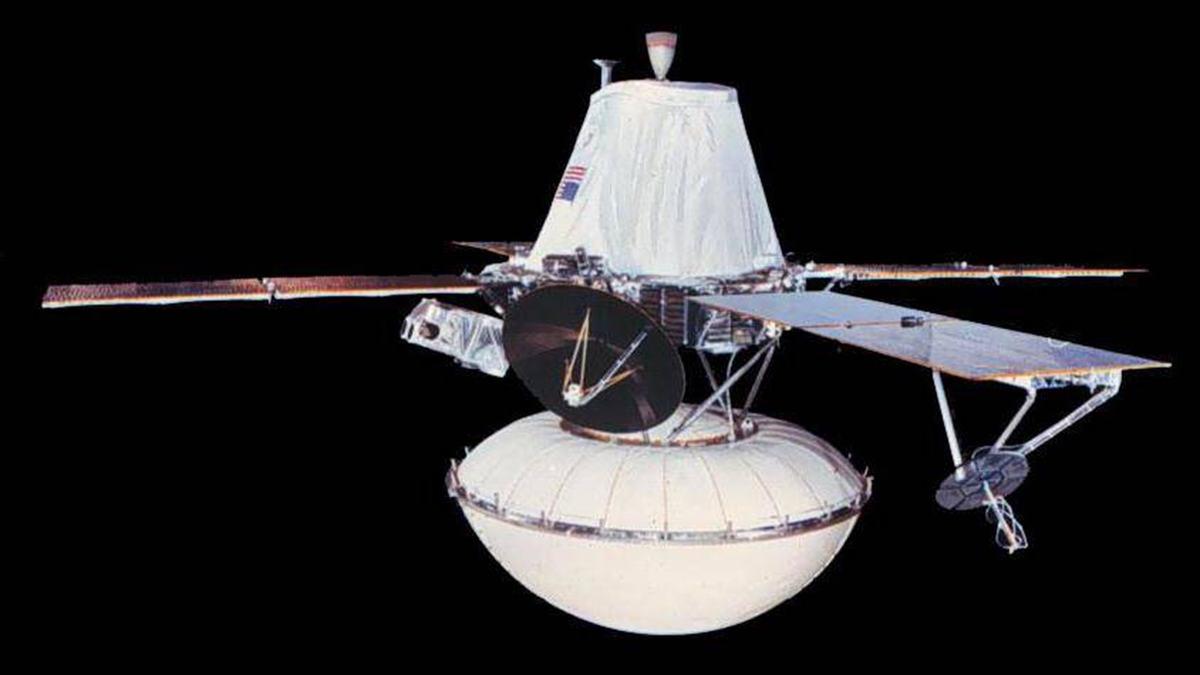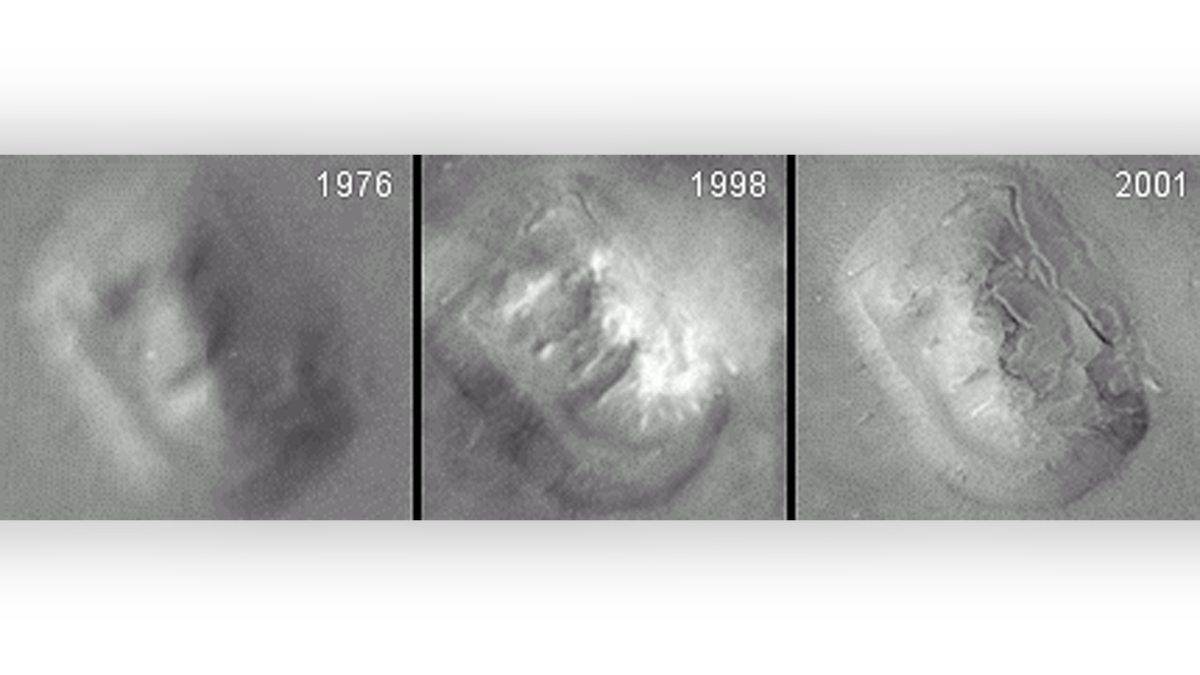A photo from Mars taken by NASA’s Viking 1 spacecraft left people perplexed and wondering about the possibility of extraterrestrial life on this day in history, July 25, 1976.
Dubbed the «Face on Mars,» the image appeared to show a carving of eyes, nose and a mouth in the Martian region of Cydonia.
«NASA’s Viking 1 spacecraft was circling the planet, snapping photos of possible landing sites for its sister ship Viking 2, when it spotted the shadowy likeness of a human face,» said NASA’s website.
ON THIS DAY IN HISTORY, JULY 24, 1998, WORLD WAR II EPIC ‘SAVING PRIVATE RYAN’ DEBUTS IN THEATERS
In total, the «head» was nearly two miles long. It «seemed to be staring back at the cameras.»
«There must have been a degree of surprise among mission controllers back at the Jet Propulsion Lab when the face appeared on their monitors. But the sensation was short-lived,» said NASA.

The «Face on Mars» was first photographed on this day in history, July 25, 1976. (NASA)
While «scientists figured it was just another Martian mesa, common enough around Cydonia,» with some «unusual shadows» — the image caused a bit of a stir among the public.
«The image inspired tabloid headlines like ‘Monkey Face on Mars,’ and books like Richard Hoagland’s ‘The Monuments of Mars,’» said a 2009 Smithsonian Magazine article.
ON THIS DAY IN HISTORY, JUNE 24, 1997, AIR FORCE RELEASES ‘THE ROSWELL REPORT: CASE CLOSED’
NASA had hoped that the release of the picture would be «a good way to engage the public and attract attention to Mars,» said its website.
«Some people think the Face is bona fide evidence of life on Mars — evidence that NASA would rather hide, say conspiracy theorists. Meanwhile, defenders of the NASA budget wish there was an ancient civilization on Mars,» said NASA.

The «Face on Mars» picture was taken by the Viking 1 spacecraft. (NASA)
Viking 1, the craft that took the famous picture, was the first spacecraft to land successfully on Mars, said NASA.
The Soviet Union’s earlier attempts to put a spacecraft on the Red Planet resulted in crashes.
Viking 1 and its counterpart Viking 2 were launched into space on Aug. 20, 1975, and Sept. 9, 1975, respectively.
The two spacecraft were made up of an orbiter and a lander.
Viking 1 began orbiting Mars on June 19, 1976, while Viking 2 arrived on August 7, 1976.
In case there were any organisms on Mars, both of the Mars landers were sterilized, said NASA’s website.
Almost a year after the spacecraft were launched, they made it to Mars.
MEET THE AMERICAN WHO REPORTED THE FIRST SENSATIONAL UFO ENCOUNTERS, PURITAN LEADER JOHN WINTHROP
Viking 1 began orbiting Mars on June 19, 1976, while Viking 2 arrived on August 7, 1976.
The «Face on Mars» picture was taken during efforts to find the best landing spot for Viking 2, said NASA.
As technology improved, the «Face on Mars» was eventually confirmed to be no more than an ordinary mesa.
CLICK HERE TO SIGN UP FOR OUR LIFESTYLE NEWSLETTER
In 1997, the Mars Global Surveyor landed on Mars. One of its priorities was to take an updated picture of the same Cydonia region as the «Face on Mars.»

The original 1976 image, taken on this day in history, July 25, next to the images of the same landform in 1998 and 2001. (NASA)
«We felt this was important to taxpayers,» explained Jim Garvin, chief scientist for NASA’s Mars Exploration Program, said on NASA’s website.
«We photographed the Face as soon as we could get a good shot at it.»
That chance arrived in April 1998.
CLICK HERE TO GET THE FOX NEWS APP
Instead of the carved facial features of the original image, the much higher resolution image showed nothing more than a normal rock.
A similar re-take in 2001, on a cloudless day on Mars, showed that, again, there was no face to be found.

